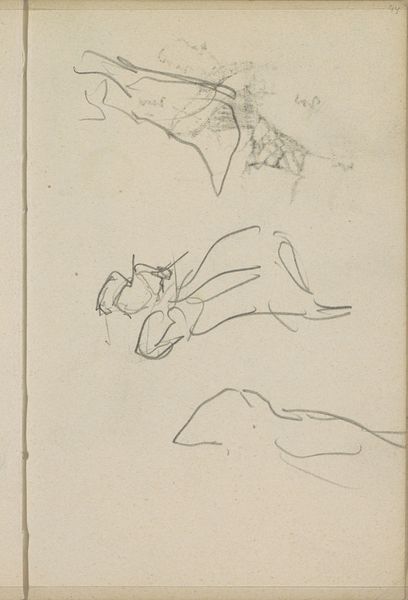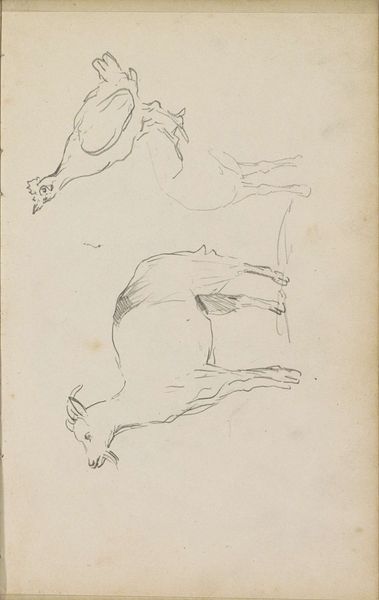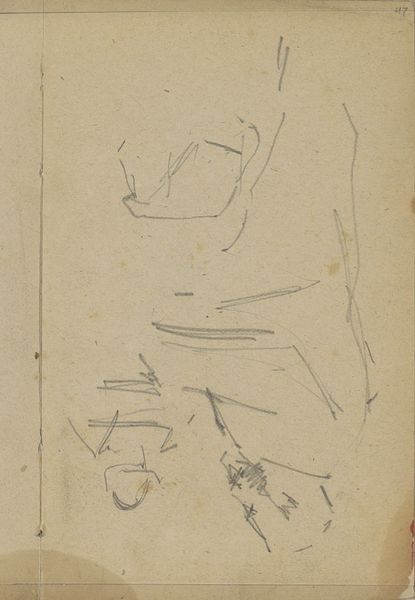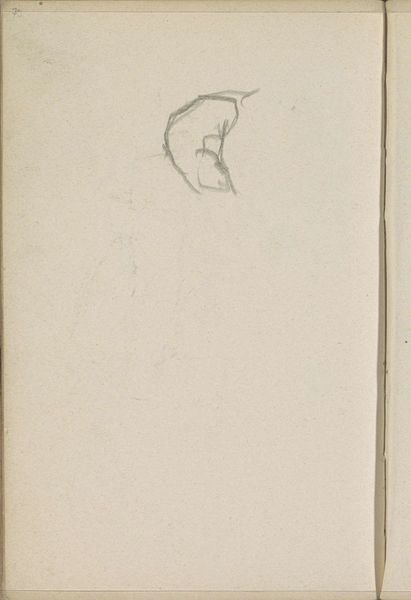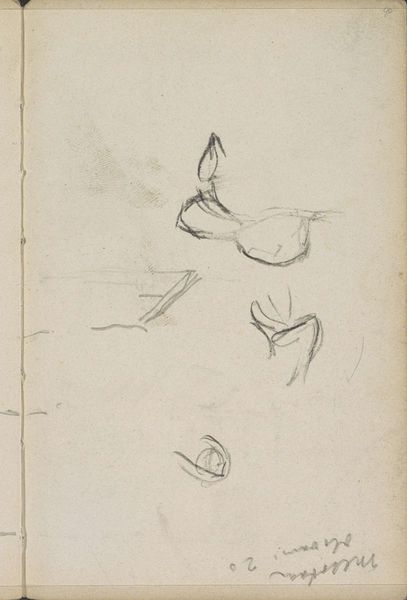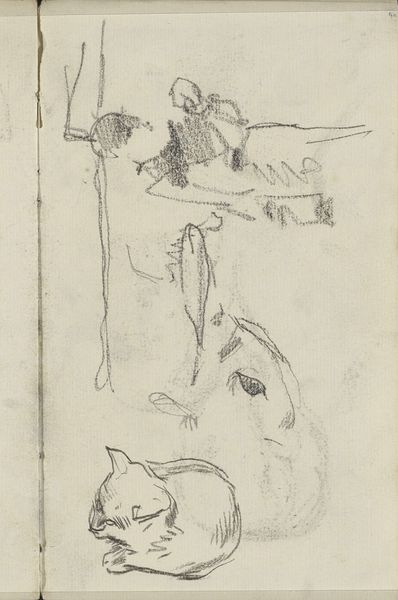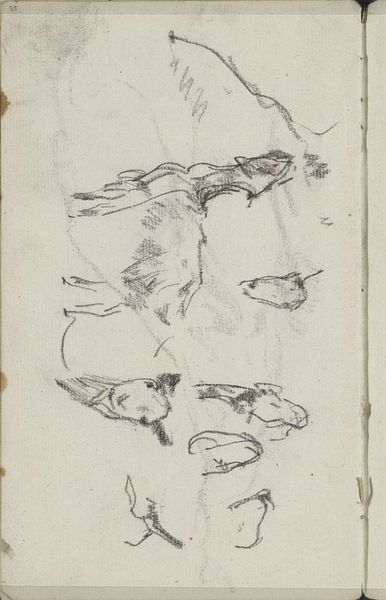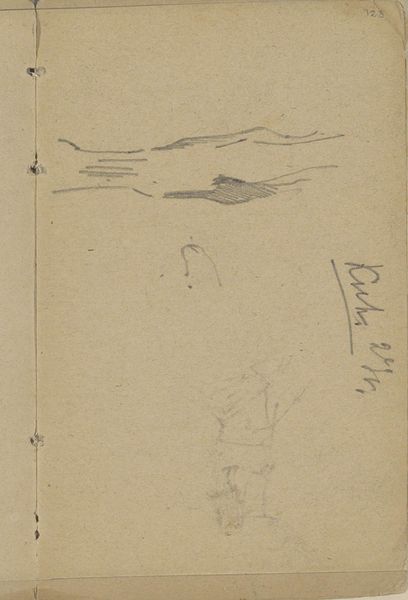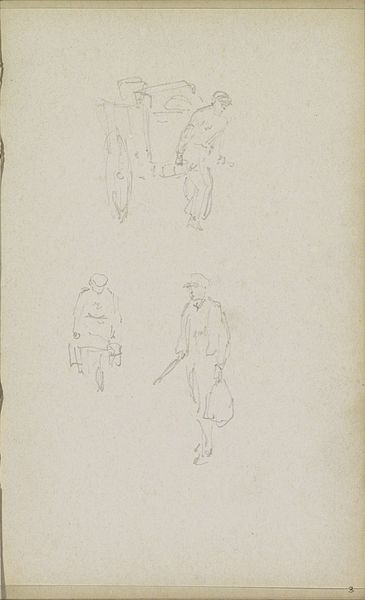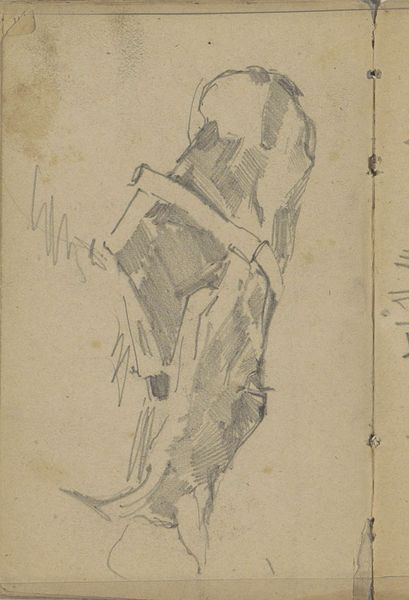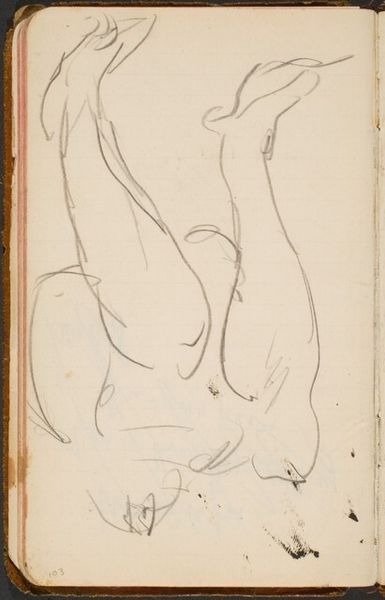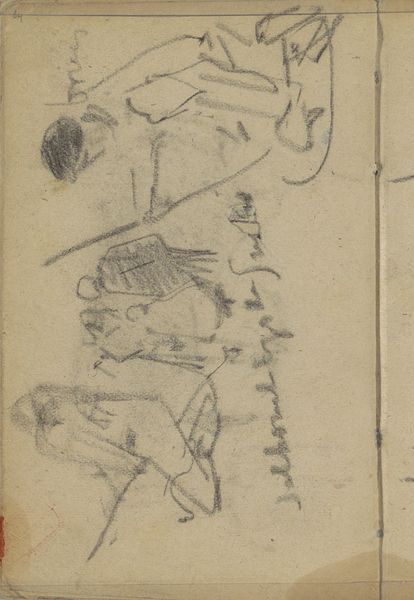
drawing, pencil, graphite
#
drawing
#
animal
#
pencil sketch
#
landscape
#
figuration
#
pencil
#
graphite
#
academic-art
#
realism
Copyright: Rijks Museum: Open Domain
Curator: Welcome. We're looking at "Two Goats," a graphite drawing by Johan Hendrik Weissenbruch, dating somewhere between 1834 and 1903. It resides here at the Rijksmuseum. Editor: Oh, those goats look…unburdened. Like they're auditioning for a philosophical debate and just realized they forgot their talking points. So sketchy, you know? Almost as if the artist quickly scribbled these down during an encounter in a field. Curator: Well, it *is* a study, a preparatory drawing of sorts. Weissenbruch was known for his landscape paintings, and animals often appeared in his work as staffage—elements that enrich the scene, giving scale and life to the land. Editor: "Staffage"—that sounds a little demeaning, doesn't it? Like the goats are just fancy coat racks for the scenery. Still, I admire the brevity of the marks. You can almost *feel* the rough texture of their coats, or is it just me? Curator: It speaks to his skill. Weissenbruch was a key figure in the Hague School, part of the movement that aimed to depict the Dutch landscape in a realistic and atmospheric way. He captures essential forms. The goats may seem simple but their placement and the nuances in the lines suggests an observation based on their habits. Editor: I dig the way they're isolated on the page. Two lone wolves, er, goats, existing outside of time and narrative. It’s all atmosphere. Like I'm witnessing some kind of primal bleating session. It’s pure Dutch minimalism, I love that in this piece it can suggest more beyond just being studies. Curator: Interesting observation. It does seem that the artwork reflects a change that moved away from strictly depicting scenes in favor of emotional or evocative interpretations, that many argue came later with the birth of Symbolism. He isn’t trying to glorify agrarian life like Millet, but instead give glimpses of life and vitality that one can identify with. Editor: Exactly. No pretense, just the essence. You could practically hear those little goats thinking, contemplating the vast meaninglessness of goat-existence. It's existentially woolly, really. Curator: It's refreshing to see those marks still speaking to audiences today, still making connections to a simple sketch and some friendly ruminants. Editor: Indeed. Those aren't just goats; they’re little symbols of the Dutch soul... bleating and grazing in artistic perpetuity.
Comments
No comments
Be the first to comment and join the conversation on the ultimate creative platform.
